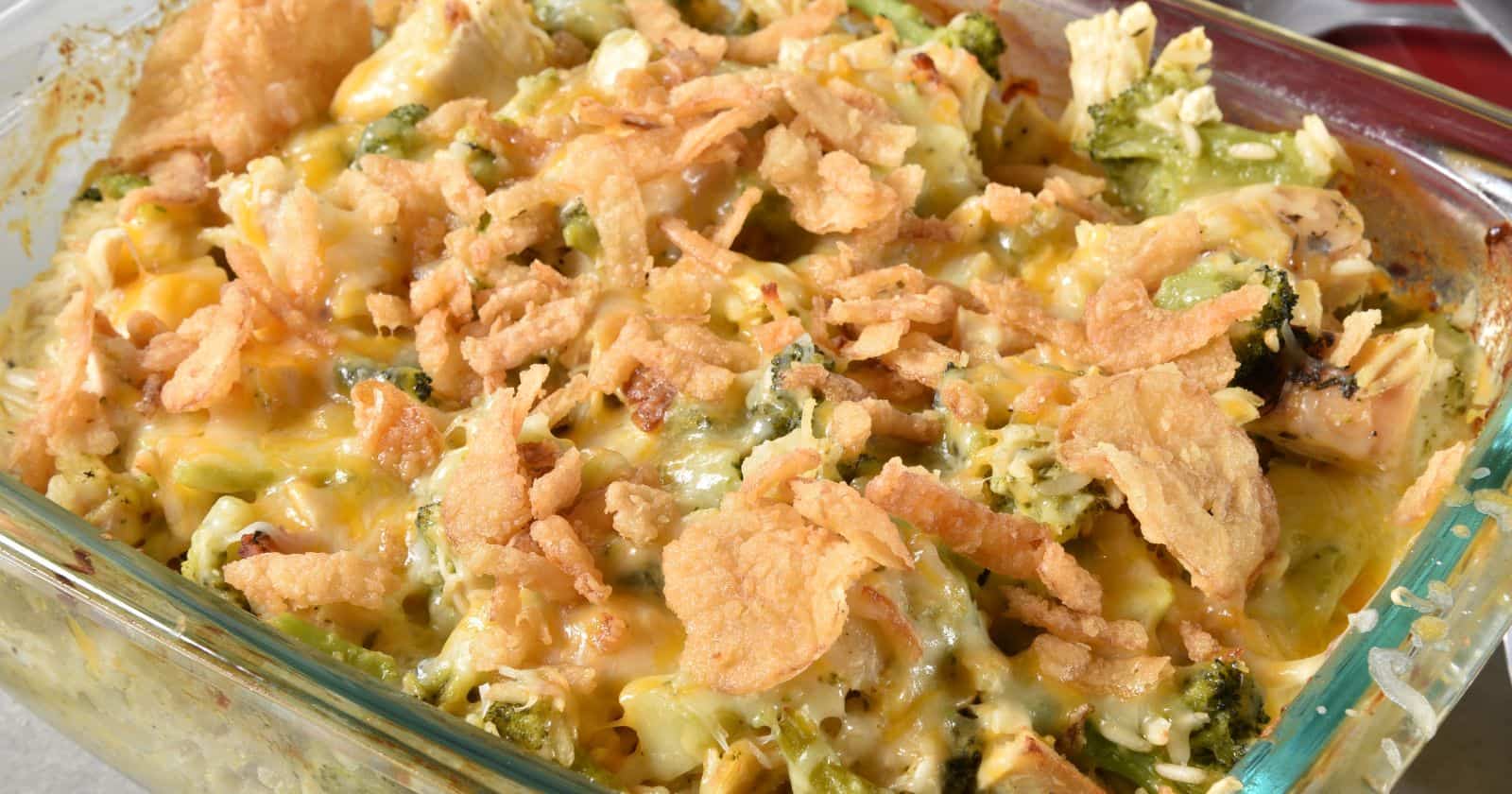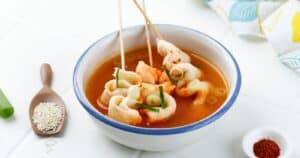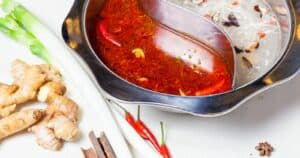Have you ever been confused about the difference between hot pot and casserole dishes? As someone who loves all kinds of communal style cooking, I used to think they were basically the same thing. But after trying many versions of each, I realized there are some distinct differences that make each style unique.
The main distinction is that hot pot involves simmering raw ingredients like thinly sliced meat and vegetables in a flavorful broth, whereas casseroles use precooked ingredients baked together. With hot pot, you dip the fresh components into the pot, cooking them tableside, while casseroles are assembled and cooked fully beforehand.
Both methods result in warm, comforting one-pot meals that are meant for sharing. But the interactive cooking process and dipping action make hot pot a more lively and social dining experience. The bubbling hot broth also imparts a fresher flavor compared to casseroles.
In this article, I’ll go over all the details about each method, from ingredients and cooking techniques to flavors and presentation. You’ll learn the origins of hot pot and casseroles and how they evolved into popular communal dishes. So read on to become an expert on how these two dish differ and which one is best for your next dinner party!
Key Differences Between Hot Pot and Casserole
While both are hearty one-pot dishes for gatherings, some key distinctions between hot pot and casseroles include:
- Hot pot features simmering broth in a pot at the table while casseroles are assembled in a dish and baked in the oven.
- Hot pot uses raw, thinly sliced ingredients that cook quickly while casserole uses pre-cooked or softened ingredients.
- Hot pot relies on a flavorful broth as the base while casseroles get flavor from a sauce or creamy binding.
- Hot pot has more dipping and interactive cooking while casserole involves scooping out portions to serve.
- Hot pot has lighter, broth-infused flavors while casseroles have richer, baked-in flavors.
Hot Pot Ingredients
The ingredients for hot pot are all about cooking quickly in simmering broth. Typical hot pot ingredients include:
- Thinly sliced raw meats like beef, pork, chicken, seafood
- Fresh vegetables that cook fast – bok choy, spinach, tomatoes
- Tofu, fish balls, dumplings, wontons
- Rice noodles, glass noodles, egg noodles
- Mushrooms, cabbage, condiment platters
- Flavorful broth – chicken, beef, seafood, vegetable, spicy
Part of the fun of hot pot is the DIY experience of selecting your own ingredients to dip into the shared pot. The raw meats and veggies cook within minutes in the simmering broth.
Casserole Ingredients
Casserole ingredients are pre-cooked so they just need to be baked together into a creamy, comforting dish:
- Cooked meats – chicken, beef, sausage, bacon
- Canned tuna, boiled eggs, cooked shrimp
- Pasta, rice, bread cubes, crackers
- Cooked vegetables – potatoes, carrots, onions, celery
- Canned beans, corn, peas
- Cheese, cream, evaporated milk
- Broth, tomato sauce, gravy
All the components get assembled either layered or mixed and then baked under a topping like breadcrumbs, biscuit dough, or mashed potatoes.
Hot Pot Cooking Method
The unique cooking method of hot pot is what makes it fun for sharing:
- Simmering broth – Flavorful broth heats up to a simmer at the table.
- Dip and cook – Guests dip and swirl raw ingredients in the broth to cook tableside.
- Interactive – Diners pick and choose ingredients and customize as they cook.
- Keep it hot – The broth stays simmering throughout and remains the focal point.
- Quick cooking – Ingredients cook fast in the hot broth.
- Social – Cooking, swapping, and dipping together makes it communal.
Casserole Cooking Method
Casseroles involve a more hands-off, oven-baked approach:
- Layer and assemble – Ingredients get mixed together or layered in a baking dish.
- Bake evenly – Casserole bakes unattended in the oven until heated through.
- No stirring – No interaction needed once it’s in the oven.
- Creamy binding – Sauce, broth, or cheese holds casserole together.
- Firmer ingredients – Uses pre-cooked or firm ingredients that won’t overcook.
- Scoop to serve – Dished out onto plates from the hot dish.
Hot Pot Flavors
The light broth is the star of hot pot, lending it fresh, layers of flavor:
- Subtle broth-infused taste – Clear broth lets ingredients shine.
- Customize flavor dips – Dip sauces add
spice , salty, sweet. - Umami flavor – Seafood, mushrooms, soy sauce, bonito.
- Naturally light – No heavy cream or cheese weighs it down.
- Briny notes – Seafood broth tastes tangy and mineral-y.
- Spice optional – Chili oil, Sichuan peppercorns can add heat.
Casserole Flavors
Richness and opulence define the flavors in a classic casserole:
- Baked-in savory flavor – Ingredients meld together while baking.
- Rich and creamy – Added cheese or cream makes it lush.
- Comforting and hearty – Abundant, toothsome ingredients.
- Familiar flavors – Chicken noodle, tuna, beef and rice all classics.
- Spices vary – Chili powder, paprika, oregano commonly used.
- Herb finishes – Oregano, basil, parsley enhance flavor.
Origins of Hot Pot
Hot pot has ancient roots as a social, communal meal in East Asia:
- Mongolian nomads – Cooked meat and vegetables in pots over fires.
- 14th century Chinese poetry – Mentions “fire hot pots” for cooking.
- Kept food warm – Allowed cooking over long periods in cold regions.
- Gathered around fire – Created a communal experience.
- Traditional Chinese medicine – Believed it brought health benefits.
- Modern hot pot – Originated in China in last few centuries.
- Spread through Asia – Adapted to other cuisines like Japanese shabu shabu.
Origins of Casserole
Casseroles evolved as an efficient way to feed families using simple ingredients:
- Ancient Greek and Roman era – Baked layered dishes like lasagna.
- Medieval European peasantry – Combined grains, vegetables, dairy for nutrition.
- Pioneer days – Could cook it all in one pot over an open fire.
- Great Depression – Stretched inexpensive ingredients into full meals.
- Post-WW2 rise – New oven and freezer technology promoted casseroles.
- Mid 20th century – Became staples in American home cooking.
- 1970s-80s – Turned dinnertime into convenient, freezer-to-oven meals.
Comparison Chart
Here is a helpful comparison chart summarizing the key differences:
| Aspect | Hot Pot | Casserole |
|---|---|---|
| Cooking Method | Simmering pot of broth | Assembled and baked |
| Ingredients | Raw, thinly sliced ingredients | Pre-cooked ingredients |
| Dining Experience | Interactive dipping at table | Scooped out of dish to serve |
| Broth Characteristics | Clear, light broth-infused | Rich, creamy, bold |
| Historical Origin | Ancient Mongolian origins | Peasant dish turned convenience food |
Which is Better for Entertaining?
Both make fantastic communal meals, but hot pot edges out casserole when it comes to fun and engagement for a dinner party:
- Interactive experience – Dipping and swirling ingredients is more lively.
- Unique flavors – Light broth highlights ingredients instead of masking flavors.
- Healthy – Less calories from fat or cream compared to rich casseroles.
- Good for groups – Easy to keep ingredients simmering for late arrivals.
- Adaptable – Can cater to meat-eaters, veggie lovers, gluten-free, etc.
However, casseroles still have a place for laid-back, hassle-free group meals. They require much less involvement once assembled and in the oven. Casseroles are better for potlucks or feeds where you don’t want to be stuck cooking and monitoring a dish the whole time.
Which Offers More Variety?
While casserole combinations are endless, hot pot takes the crown when it comes to ingredient variety:
- Broth flavors – Chicken, tomato, seafood, spicy, veggie stocks.
- Dip sauces – Chili oil, sesame, soy sauce, hoisin, garlic, ponzu.
- Meats – Beef, pork, chicken, seafood, lamb.
- Veggies – Mushrooms, greens, sprouts, potatoes, cabbage.
- Starches – Rice noodles, glass noodles, assorted dumplings.
- Add-ins – Tofu, eggs, fish balls.
With a huge range of meats, veggies, broths, and dipping sauces, the possibilities are virtually endless when playing with hot pot ingredients.
Quick Comparison
| Category | Hot Pot | Casserole |
|---|---|---|
| Method | Simmering broth with dipping raw ingredients | Assembled and baked dish |
| Ingredients | Raw, thinly sliced | Pre-cooked, firm |
| Flavors | Clear, broth-infused | Creamy, rich baked-in |
| Origins | Ancient Asian | Peasant to convenience dish |
| For Entertaining | Interactive and lively | Hands-off but less engaging |
| Variety | Broths, dips, endless ingredients | Comforting but less versatile |
FAQs
What’s the difference between hot pot and stew?
Stew involves simmering cubed meat and vegetables in broth or gravy until tender. Hot pot cooks ingredients fast by dipping raw thinly sliced meat and vegetables into simmering broth.
Can you make hot pot in a slow cooker?
Slow cookers don’t heat up enough for authentic hot pot. The broth needs to be simmering rapidly at 180°F+ to properly cook ingredients. Use a portable burner or induction cooker instead.
Is hot pot gluten free?
Yes, hot pot broth and ingredients like meats and vegetables are naturally gluten free. Just avoid wheat noodles and soy sauce with gluten. Check dipping sauce labels.
What oven temperature is best for casseroles?
Most casseroles bake between 325-375°F. Make sure to cover tightly with foil to prevent drying out. Allow extra time if baking at lower temperatures.
Can you freeze and reheat casseroles?
Cooked casseroles freeze well for up to 3 months. Thaw overnight in the fridge before reheating in a 350°F oven until hot in the center, about 45 minutes depending on size.
Which One Should You Make?
- If you want an interactive communal experience with light flavors, try hot pot.
- If you want a hearty, warming dish you can make ahead, choose a casserole.
- If you are entertaining and want engagement, go for hot pot.
- If you need something to just throw in the oven, pick a casserole.
- If you prefer lighter, cleaner broth flavors, pick hot pot.
- If you like rich, indulgent comfort food, make a casserole.
- If you have a variety of dietary needs to accommodate, hot pot can adapt.
Whichever style you decide on, you really can’t go wrong with either hot pot or casserole for a satisfying communal meal! Have fun cooking.





